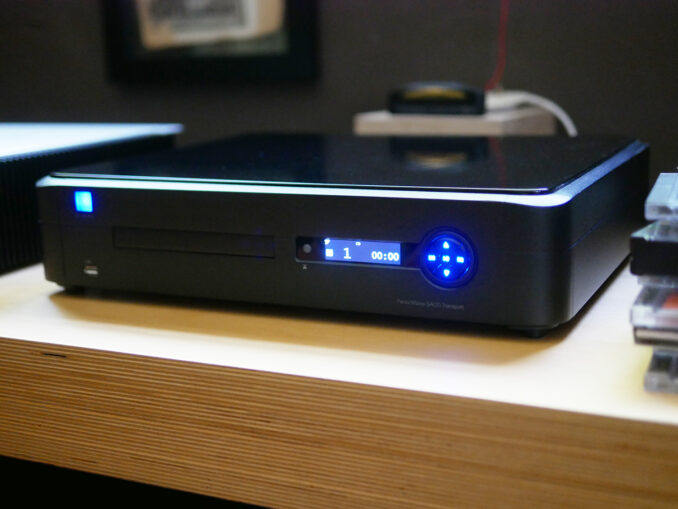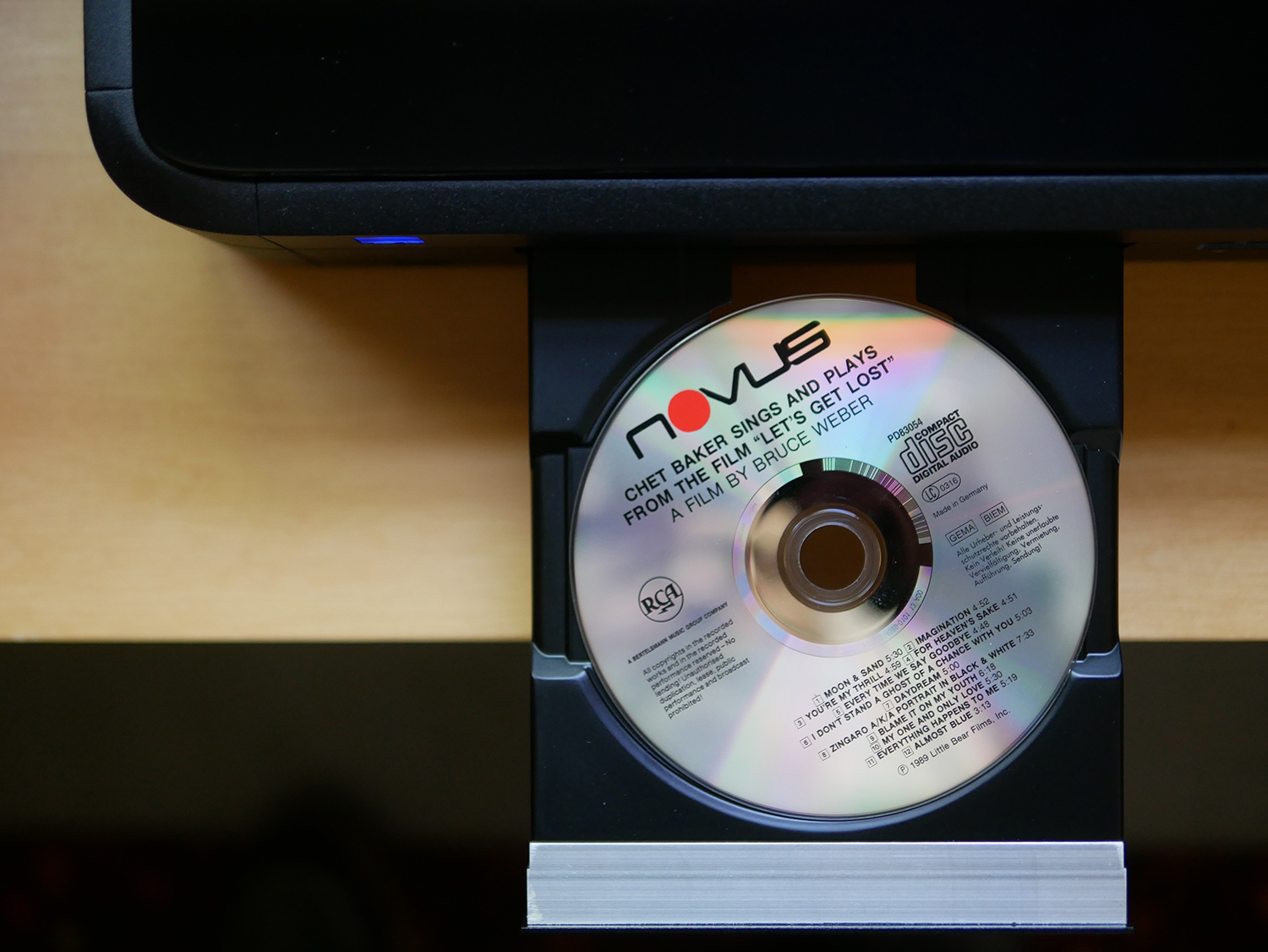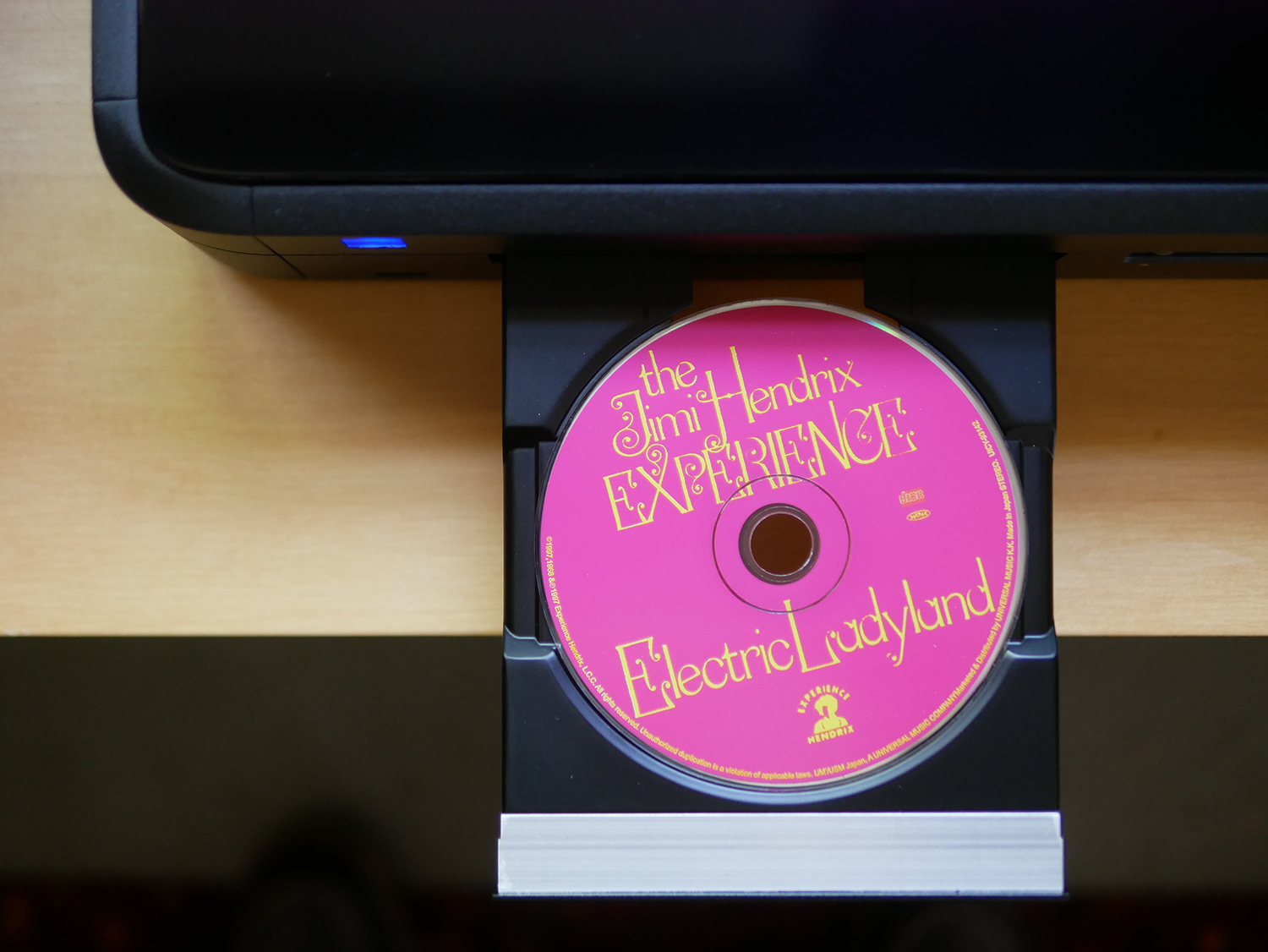
There are days when I feel sorry for people who believe that all digital sounds the same.
And I feel sorry for these people because this kind of sloppy thinking can make us miss out on all kinds of enjoyment, like the pleasure that comes from hearing our digitally stored music sound as if it has been run through the drive-through bit wash, cleaning off all of the noise, dinge, and haze that can build up around data that is transmitted as voltage over wire, represented, in the abstract, as a series of 1s and 0s.
1, 0 and done. Or so the implausibly simple story goes.
As a preface to CD replay, I’ll point you to my CD Replay: A Preface article where I get into some of the back story behind playing CDs from an experiential perspective. I continue this story in my review of the Cambridge Audio CXC CD Transport, where I shared, In the end, playing CDs strikes me as a lifestyle choice. Spending time with the Cambridge CXC was a very pleasant reminder that real time and attention spent listening to music pays dividends and sometimes having less to choose from makes the experience more thoughtful.
Hold that thought.

The PS Audio PerfectWave SACD Transport is a device that allows for the playback of CDs and SACDs into your DAC of choice. I have to say up front that I do not have a DAC capable of playing SACDs from the PerfectWave’s I2S output, which worked out just fine seeing as I do not own any SACDs to play. From a bird’s eye view, the PerfectWave and Cambridge CXC offer similar functionality, the latter lacking the SACD piece. While we’re juggling these two transports, its worth noting that the PerfectWave costs more than 10x the price of the CXC — $6499 versus $599, respectively.

One of the tricks the PerfectWave has up its sleeve is its transfers signals from the input stage to the output stage by a form of focused beam short-wavelength radio signals. This trick stops noise dead in its tracks, seeing as electrical noise cannot hitch a ride on airwaves. Each stage has its very own board and power supply for the same reason, to keep noise from traveling and contaminating, while an FPGA is employed for data buffering and signal clocking. The PerfectWave uses a transport from D&M, which is also used in the dCS Rossini Transport, among others.
For more on the ins and outs, here’s Paul McGowan of PS Audio on the PerfectWave.
The Transport is wrapped in a lovely, curved-cornered aluminum chassis that comes in silver or black, with a shiny black top made from acrylic paint over HDF (wood). The front panel houses an on/off switch, a small display that shows basic album/track information, and a series of buttons for playback. The included remote also offers all of the functionally you need to play. There’s also a USB-A input on the front panel for playing back music from USB storage.

I paired up the PS Audio PerfectWave, using its Coax output, with the Denafrips ARES II DAC (see review), so that I could do easy A/B comparisons with streaming and serving files from a Raspberry Pi 4 into the Denafrips IRIS USB DDC, which fed the ARES II via its Coax output. We’re talking about using the same DAC, fed from Coax, from both the Pi/IRIS and the PerfectWave.
I also had the PerfectWave play with the totaldac d1-tube DAC/Streamer. This allowed for a comparison between the totaldac’s built-in streamer and the PerfectWave spinning discs, connected to the totaldac via AES.

The rest of the review system included the Cambridge Audio Edge A (see review) acting as preamp, feeding the Parasound JC 5 Power Amplifier, as well as the review Schiit Ragnarok 2 Nexus Integrated Amplifier driving the DeVore O/96 speakers as well as the review pair of Golden Ear Triton Reference Towers. Everything was wired up with cables from AudioQuest.

Living with Great Sounding Gear Is A Lifestyle Choice
The differences between playing CDs through the Cambridge CXC and the PS Audio PerfectWave, in terms of sound quality, were big. Huge. Calculators may be wondering if these differences were 10x better, but that’s a calculation I cannot make because value is in the budget of the beholder.
The sonic superiority of the PerfectWave was evident within moments of hitting Play and hearing Chet Baker’s floppy vocals from the soundtrack to Let’s Get Lost. All of his spit, wit, and loose-toothed wisdom entered the Barn’s space as if nothing stood in between the recording and me but air. Years, and years, spent listening to, and comparing, digital devices costing from $70 to more than $20k has taught me a few things. One of the more interesting observations is the absence of noise in digital to analog systems makes music sound more natural, more precise, and more relaxed. And you don’t really know what noise in digital to analog systems sounds like until you’ve not heard it.

This signal purity came through loud and clear regardless of the music or the recording’s quality. Using the Denafrips IRIS USB DDC as comparator, I A/B’d my way through a number of recordings, switching between the PerfectWave and ARES II DAC/Pi 4 combo. Here, the PerfectWave easily proved to be the more perfect solution in terms of sound quality. Music was more refined, with a more clearly defined sense of the space of the recording, and the voices of the things that makes up music were more fully formed. If you add all of these pluses up, you get a more engaging listening experience because there’s a more fleshed out version of music there for the taking.

This kind of startling sound quality ignites my I wonder what [insert favorite CDs] sounds like! sensors so I spent days and weeks letting the PerfectWave reintroduce me to old chestnuts. If I wasn’t a reviewer and I owned a lot of CDs and planned to buy more, I could absolutely see adding the PS Audio PerfectWave to my playback arsenal of streaming, serving, and spinning LPs. This desire is fueled by the unique experience playing CDs has to offer, coupled with a quality of playback that was on par with the best streaming solution I have in Barn.

Playing music from a USB flash drive is not my idea of fun. But I can see why PS Audio included the option for people who are not interested in streaming or in having a large library of file-based music sitting on a NAS or external drive. I took the Transport’s front USB drive for a short run, using the lovely soundtrack from Jim Jarmusch’s Only Lovers Left Alive by his band SQÜRL, and also featuring Zola Jesus, Lebanese vocalist Yasmine Hamdan, and lute player Jozef van Wissem. The USB drive did not disappoint in terms of sound quality, so for those owners who are so inclined to serve files from a stick, you can expect to be pleased with the results.
Switching the digital to analog conversion over to the totaldac d1-tube DAC/Streamer (see review) made for a different kind of comparison. Here, we’re looking at an Ethernet cable going from my router, through a DJM Electronics GigaFOILv4-INLINE Ethernet Filter, into the totaldac for serving and streaming, while the PerfectWave’s AES output fed the totaldac’s AES input. Not apples to apples, more like a fruit salad of comparisons.

The totaldac’s built in streaming and serving solution made for a much closer sonic picture when compared to the PerfectWave. Where the Cambridge CXC was clearly bettered by the PerfectWave going into the same DAC, the ripped version of The Bill Dixon Orchestra’s masterpiece Intents and Purposes from 1967 gave the CD a run for its money. As a matter of fact, it took some real time and fairly intense focus, to pick out the nits that differentiated the sound of the totaldac serving and the PerfectWave spinning the same album. In the end, I would give the edge to the PS Audio PerfectWave Transport because it offered up a clearer and more precise sound image. By a short nose. [footnote 1]
Just for fun, I also tee’d up the Tidal version of this same record and gave it a comparative spin to see if there was a difference between the locally stored ripped version, and the streamed version through the totaldac. Not so much. With the totaldac, the differences between these two versions were minute and I doubt even careful listeners would call foul on the streamed version. They sound, to my ears, more than 95% the same.
Back to CDs, the PS Audio PerfectWave proved to be a stunning sound companion. It is very well made, the CD mechanism is strong and sturdy, nothing floppy about it (pardon the old man pun), and overall the experience of listening to music through it made for a very direct connection to the music encoded on those shiny discs. With nary a hitch or giddy-up in sight.

Are You Experienced
One of the wonderful things about hifi is you can have your lifestyle and sound quality (too). The PS Audio PerfectWave SACD transport is as good a music source as I’ve heard in barn. If you have a collection of shiny discs, and especially a growing collection, and a DAC you love, the PerfectWave will get your music from point A (the CD or SACD) to point B (inside your head) without as much as laying a sonic hand on it. Bravo!
- The best network players/streamers I’ve heard are the dCS Network Bridge and totaldac d1-streamer. They bettered every comer by a wide margin so I am certain that inserting either into my system, bypassing the totaldac’s internal streamer, would all but eliminate any sonic differences between serving, streaming and playing CDs. So when people say “CDs sound better than streaming” I would add — it depends on the gear used for the comparisons.
PS Audio PerfectWave SACD Transport
Price: $6499.00
Specifications
Physical
Unit Weight: 22 lbs [9.97 kg]
Unit Dimensions: 14” x 17” x 4” [ 36cm x 43cm x 10cm]
Shipping Weight: 31 lbs [14 kg]
Shipping Dimensions: 20.5”x 24” x 10” [52cm x 61cm x 25cm]
Color Options: Black, Silver
Power Requirements
Input Power: Model specific 100VAC, 120VAC, or 230VAC 50 or 60Hz
Power Consumption: 30W
Media
Optical discs: SACD/CD/CD-R/CD-RW/, DVD-R*/-RW*/+R*/+RW* (*Audio data file only)
USB Drive: USB Flash Drive with audio files
Supported File Formats: MP3/WMA/AAC (~48kHz/320bps), WAV/FLAC/AIFF (~192kHz/24bit), ALAC (~96kHz/24bit), DSD (~5.6MHz)
Outputs
I2S: 1 I2S output for PCM and DSD (raw)
Coax: 1 output for PCM and DoP
BNC: 2 outputs for PCM and DoP, Use in tandem for double-rate DoP
XLR Balanced 2 outputs for PCM and DoP, Use in tandem for double-rate DoP
RJ45 and WIFI Ethernet and WIFI for over-the-air code updates
Company Website: PS Audio

